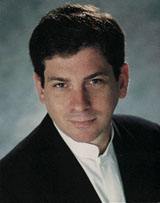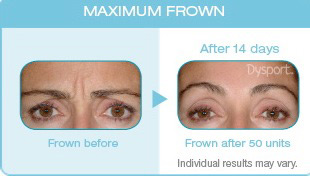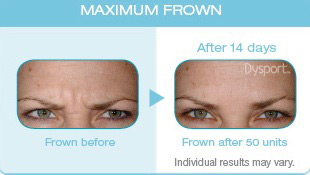

DR. WARREN LENT
150 N. Robertson Blvd, Suite 140
Beverly Hills, California 90211
(310) 652-6500
info@mybestplasticsurgeon.com

The New Botox
It's no secret that Botox has been the hottest item in the cosmetic surgery world since the FDA approved it for the treatment of wrinkles in 2002. In 2008, over 2.5 million people had some type of Botox injected to rid lines between the eyes, in the forehead and in the crow's feet area and Beverly Hills and Los Angeles have certainly been the epicenter of this phenomenon. Botox has also stood the test of time, by proving both its value and relative safety. Botox has also gone unchallenged by any serious competitor. That is until now. In April of 2009, the FDA approved Dysport as a treatment for facial wrinkles.
The 4 R's
Before we get deep into specifics, it is important to understand where
these two medicines fit into the overall scheme of treating the
aged face. When treating facial aging, we look to "the 4 R's". The first "R" stands
for Relax the muscle under a wrinkle. This is where Botox and Dysport come
in. They are derivatives of the Botulinum neurotoxin, which paralyzes the
small underlying muscles that cause the wrinkle. The second "R" is for Refill, which means to smooth out the lines by plumping them up with fillers such as Restylane, Perlane or Collagen. Third is Resurface, whereby the quality of the aged and damages skin is actually improved. The best of this group is Laser resurfacing where the damaged skin is actually vaporized away and new collagen comes in to tighten and revitalize the area. The last "R" is for Re-draping. This is when the excess quantity of skin is removed and the remainder is placed back into its original, more youthful location. This category includes facelifts, blepharoplasty (eyelid surgery) and necklifts.
the quality of the aged and damages skin is actually improved. The best of this group is Laser resurfacing where the damaged skin is actually vaporized away and new collagen comes in to tighten and revitalize the area. The last "R" is for Re-draping. This is when the excess quantity of skin is removed and the remainder is placed back into its original, more youthful location. This category includes facelifts, blepharoplasty (eyelid surgery) and necklifts.
Dysport vs Botox
Let's start by saying that both of these products have about the  same overall effect. Both are injected into the muscle under a wrinkle to temporarily stop it from contracting, thus allowing the overlying skin to relax and smooth out. The outcome from both of these medications is greatly enhanced when used in combination with cosmetic fillers, such as Restylane. Dysport may offer some small but incremental advantages over Botox.
same overall effect. Both are injected into the muscle under a wrinkle to temporarily stop it from contracting, thus allowing the overlying skin to relax and smooth out. The outcome from both of these medications is greatly enhanced when used in combination with cosmetic fillers, such as Restylane. Dysport may offer some small but incremental advantages over Botox.
The effect of Dysport may occur earlier. Most people see its benefits within 2 to 4 days, sometimes as early as 24 hours after injection, while Botox typically takes 3 to 5 days before its effects are seen.
Both medicines have their peak performance between 30 and 60 days. In some studies, Dysport has been shown to last slightly longer than Botox, occasionally even lasting over 6 months, but both typically last between 3 and 6 months.
Safety is another key area to compare the two products. Again, both are considered to be generally safe, however, as within any medical treatment there is always some risk. Occasionally patients experience headaches, pain and bruising following the treatment, but the risk most physicians are concerned with is sagging of the eyelid (known medically as ptosis). Here is one area that Dysport clearly holds an advantage. The reported incidence of this occurring with Dysport is 0.7%, whereas with Botox this occurred in 5.4% of patients.
When comparing the price, the two items are comparable and currently are about equal in cost. The advent of Dysport does introduce competition into a market that was, until now, monopolized by Botox. Competition is good for patients as it has the potential to drive down the cost, making it more affordable.
To summarize, both products are effective and safe. Both can play an important role in the "4 R's" of treatment. As with most advances in medicine, improvements come in small, but incremental steps and Dysport probably represents the next step forward in the use of muscle paralyzers to treat facial aging.




